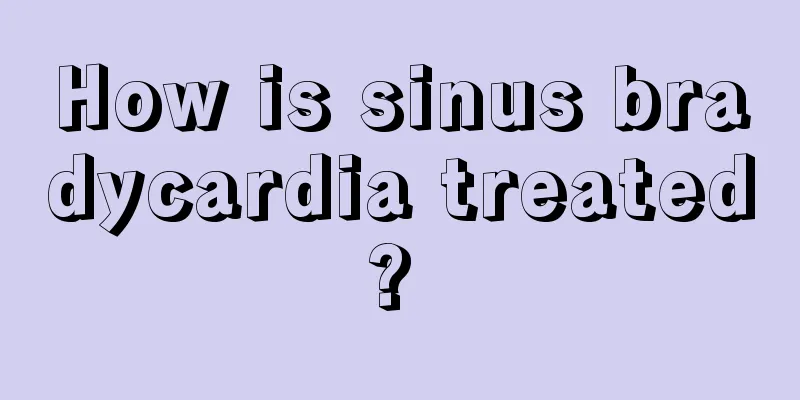How is sinus bradycardia treated?

|
I believe many people have heard of a heart disease called sinus bradycardia. The heart is one of the most important organs in a person's body. Heart disease can cause the entire body to fall into a diseased state. Sinus bradycardia is also a type of heart disease that cannot be ignored. So how should sinus bradycardia be treated? Do you understand this common sense? Treatment principles 1. Sinus bradycardia: If the heart rate is not less than 50 beats per minute and there are no symptoms, no treatment is required. 2. If the heart rate is lower than 40 beats per minute and symptoms occur, drugs to increase the heart rate can be used. 3. Patients with significant sinus bradycardia accompanied by sinus arrest and syncope may consider installing an artificial pacemaker. 4. Treatment of primary disease. 5. Symptomatic and supportive treatment. examine The electrocardiogram of sinus rhythm must meet the following two conditions: (1) P waves are upright in leads I, II, aVF, and V5, and inverted in leads aVR. (2) PR interval greater than 0.12 seconds. Any arrhythmia caused by changes in the automaticity of the sinoatrial node is called sinus arrhythmia. The factors that affect the changes in the automaticity of the sinus node include neural factors, humoral factors and factors of the sinus node itself, but the main factors are neural factors and humoral factors. Only in a few cases are the changes in the automaticity of the sinus node caused by organic damage to the sinus node itself. Among the neural factors, the main influence is the vagus nerve, followed by the sympathetic nerve. Therefore, tachycardia can be caused by emotional excitement, physical activity, after meals and fever. Similarly, some humoral factors can also affect the automaticity of the sinoatrial node and cause sinus arrhythmia. Classification The impulses emitted by the sinoatrial node are irregular, and the cardiac cycle is significantly uneven in speed, which is called sinus arrhythmia. Clinically, sinus arrhythmia is divided into the following types: Respiratory sinus arrhythmia: Respiratory sinus arrhythmia is the most common type of sinus arrhythmia. It mostly occurs in children, young people and the elderly, and is less common in middle-aged people. The mechanism of respiratory sinus arrhythmia is that during the breathing process, the tension of the vagus nerve and sympathetic nerve in the body changes, causing the automaticity of the sinoatrial node to change periodically and regularly. When you inhale, the sympathetic nerve tone increases and the heart rate increases. When you exhale, the vagus nerve tone increases and the heart rate slows down. The cycle of changes in heart rate is exactly equal to one breathing cycle, and the heart rhythm becomes regular when breathing stops. |
<<: What is sinus arrhythmia? Do you understand these
>>: What is high uric acid? Come here to find out
Recommend
How to treat liver cancer in the middle stage better? Recommended Chinese medicine prescriptions for treating liver cancer in the middle stage
In medicine, liver cancer is a very common malign...
Will children grow taller by skipping rope? What are the benefits?
Many mothers want their children to grow taller, ...
Causes of cervical cancer
What we need to pay attention to when cervical ca...
What goes well with yogurt
A cup of yogurt every day not only helps replenis...
Does soybean enhance sexual performance?
Soybeans are rich in soy protein. Eating more soy...
How to tie a crystal pendant knot
Female friends love beauty, so they always decora...
Three main symptoms of esophageal cancer
As the tumor in the esophagus continues to grow, ...
How to remove mites from bedding
Mites are tiny organisms and there are many types...
What can’t be eaten with watermelon rind
Foods complement and counteract each other. Many ...
Gastric mucosal protective agent
Bad eating habits have caused many people to suff...
The dangers of twisting ears
I believe that many people have experienced being...
What are the misunderstandings about hepatitis B surface antigen?
When checking for hepatitis B in the hospital, th...
Will crying affect eyesight?
In life, many people often suffer from emotional ...
Seven must-know common sense for healthy living
In daily life, we must pay attention to small det...
What cosmetics should I use if my face is prone to allergies
What cosmetics should I use for my face that is p...









